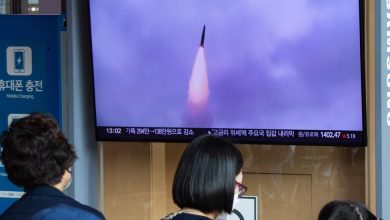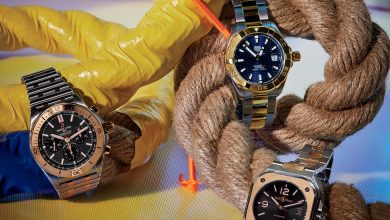Sydney Museum Sends Visitors Into an Oil Tank (and an Artist’s Imagination)

When the Art Gallery of New South Wales in Sydney, Australia, began planning a campus expansion almost a decade ago, to add a building for contemporary art, it wasn’t clear what would become of the two giant, abandoned World War II-era oil tanks located underneath the new site. The museum’s answer: Let artists have at them. It has transformed one of the tanks into a vast, unnerving sort of gallery space and turned it over to the darkly imaginative Argentine installation artist Adrián Villar Rojasfor a sweeping exhibition. Called “The End of Imagination,” it will open on Dec. 3, along with the $245 million expansion, known as the Sydney Modern Project.
Visitors will enter an airy new building by the Japanese architects SANAA, then descend from a sunlit atrium via a spiral staircase into the Tank — and an apocalyptic or post-human universe — which is to say, classic Villar Rojas territory. A biennial-circuit favorite who combines “a sci-fi writer’s imagination and an ecologist’s anxieties,” as the Times critic Jason Farago wrote, Villar Rojas has installed sculptures inside the tank that might suggest flora or fauna but on closer inspection are not quite terrestrial.
“As you wander through the landscape, you will encounter sculptures that are so strange and detailed, so conflicted and intricate, that I think of each one as hundreds of objects combined,” said Justin Paton, the curator who organized the commission. “He is creating a world unto itself. I think when visitors come out of this space, the real world will look odd.”
Paton, who has also curated an inaugural show called “Dreamhome,” said the SANAA building will showcase contemporary art and Indigenous art by Aboriginal and Torres Strait Islands peoples. The Art Gallery of New South Wales’s existing neoclassical building will remain home to earlier collection holdings going back to European old master paintings.
Known for working with politicized locations, including Trotsky’s last house in Istanbul and a naval school in Buenos Aires that became a detention center, Villar Rojas said that he is especially interested in the contrast between the oil tank as a “shadowy space of war” and the sunny celebration of “colonialist” cultural relics in the museum above ground. “It’s like the conscious and unconscious aspects of the same imperial project, now connected,” he wrote in an email from his home in Rosario, Argentina.
The 24,000-square-foot oil tanks were built during World War II to supply fuel for Allied warships at a time when Singapore was vulnerable to Japanese attacks. By the time they were uncovered in 2014, they had flooded, and the concrete walls and columns had a patina of petroleum, salt and mineral blooms.
Villar Rojas was struck on his first visit four years ago by the tanks’ enormous scale, echo-rich acoustics and dramatic play of light. “The shadows created by the lights hitting the columns reminded me of being in a pitch-black forest, only holding a torch,” he recalled. He has designed a special lighting display to recreate something of that experience for visitors.
To make the installation from his studio in Rosario, Villar Rojas assembled a large team of collaborators, including computer programmers, welders and carpenters. The programmers created a computerized model of the oil tank, building what he called a highly detailed “digital twin with every column, stain and shadow.” His mother found a building, once used for manufacturing air-conditioning units, that was large enough for fabrication.
His team also invented new modeling software, dubbed the Time Engine, to digitally simulate the effects that a particular environment would have on sculptural forms over time, a way of virtually aging an object. “What if we left Rodin’s ‘The Kiss’ in a jungle in the Jurassic period for 500 years?” he wrote. “What would a coffee mug or a car or any work of my design that was left in the canyon of the Valles Marineris on Mars for 15,000 years look like?”
He used the 3-D digital forms generated by such experiments to build the artworks going to Sydney. Paton, who called them “wondrous monsters,” said they will remain in place for nearly a year before the next artist is invited into the oil tank.




